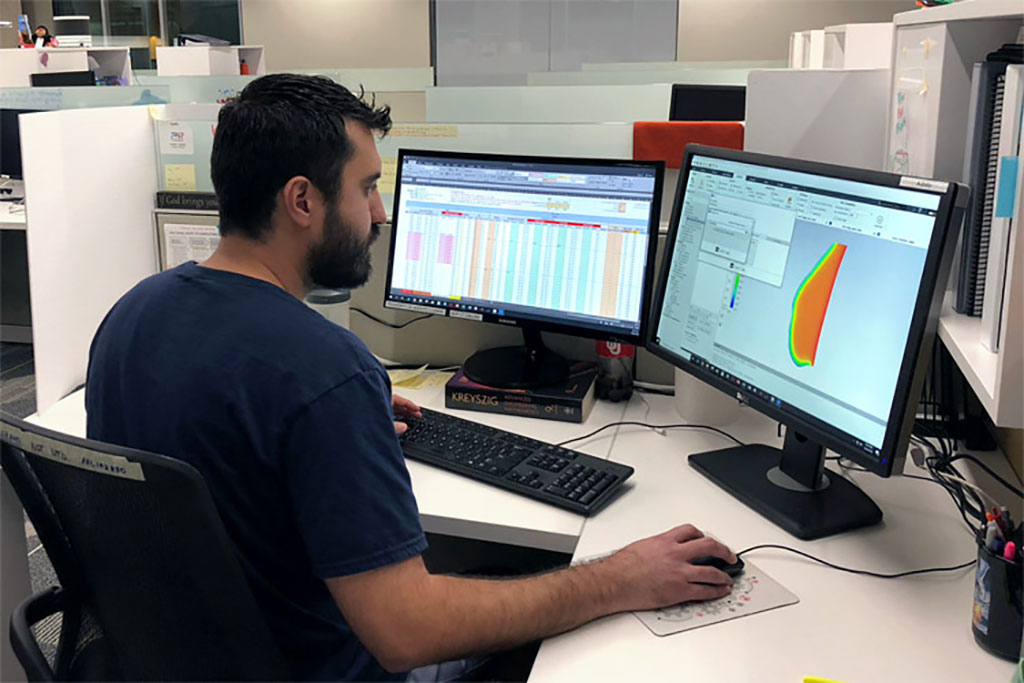High-Resolution Thermal Imaging Helps Monitor Breast Tumors
By MedImaging International staff writers
Posted on 17 Sep 2020
Thermographic detection of pathophysiologic changes within the breast could aid tumor monitoring without the need for ionizing mammography radiation, according to a new study. Posted on 17 Sep 2020
Researchers at the University of Texas Dallas (UTD; USA) and the University of Texas (UT) Southwestern Medical Centre (UTSW; Dallas, TX, USA) conducted an experimental study to determine the individual thermal characteristics of breast cancer by constructing a computational thermal model calibrated to clinical data consisting of high-resolution infrared (IR) images, three-dimensional (3D) breast surface geometries, and histologically diagnosed internal breast cancer tumor definition of a specific volunteer.

Image: Lead author Dr. Adolfo Lozano working on the proof-of-concept computer model (Photo courtesy of UTD)
To do so, the researchers quantified blood perfusion rate, metabolic heat generation rate, and other thermal features of both normal and cancerous breast tissues that best matched surface temperatures as recorded on a state-of-the-art IR camera; a 3D scanner recorded surface geometries; and magnetic resonance (MR) imaging data provided tumor definition such as size and spatial location. The 3D scans and tumor definition served as geometric inputs to the model, whereas IR images were used to calibrate the model.
The results showed a detectable temperature differential in metabolic heat generation between the patient's normal and cancerous breasts, as well as increased perfusion rates in the affected breast. They cautioned, however, that the computational model cannot be applied to all types of breast cancer, and that it is specific to each subject’s unique breast cancer molecular subtype, stage, and lesion size. In addition, not all breast cancers generate sufficient heat to be detected via IR thermography. The study was published in the October 2020 issue of Nature Scientific Reports.
“Our goal is to improve digital thermal imaging as a tool for monitoring cancer and its treatment, rather than replacing cancer screening by mammograms,” said senior author Fatemeh Hassanipour, PhD, of the UTD Jonsson School of Engineering and Computer Science. “Infrared imaging could potentially provide useful information in a diagnostic setting to radiologists. We want it to be used like a second device for monitoring tumors.”
Thermography refers to digital infrared thermal imaging (DITI), a test that detects temperature changes on the surface of the skin using an IR thermal camera to record the areas of different temperature in the breasts. The camera displays these patterns as a heat map. As the presence of a tumor is associated with the excessive formation of blood vessels and inflammation in the breast tissue, the theory is that these changes should show up on the IR image as areas with a higher skin temperature.
Related Links:
University of Texas Dallas
Southwestern Medical Centre













